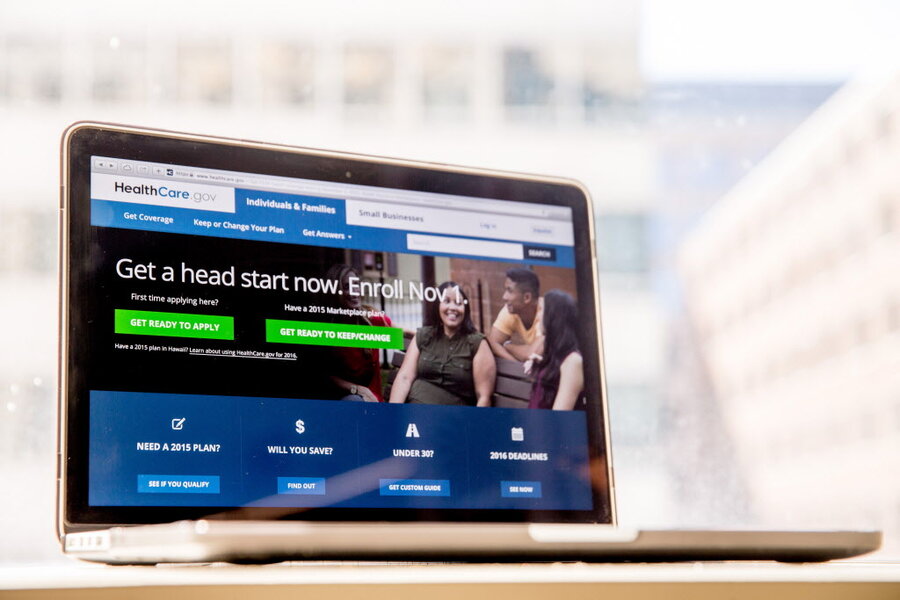Why are some Obamacare plans about to become more expensive?
Loading...
One of the most popular plans under the Affordable Care Act is about to see a huge price hike, according to a new study.
An analysis released Wednesday by the Kaiser Family Foundation projects that in 2017, premiums could rise an average of 10 percent across 14 major US cities for the "silver plan," which has the second-lowest cost of the plans in the Healthcare marketplace. The silver plan is one of the most popular healthcare plans available under Obamacare, according to a report by the US Department of Health and Human Services, because of its low cost. Premiums for the plan had increased by only 7.2 percent when open enrollment for 2016 began.
Last year, premiums increased by an average of five percent across the United States after approval from state insurance, according to the report.
The projected increase for 2017 isn’t uniform across the country. Premiums for the cheapest health insurance plans available under Obamacare could jump by as much as 26 percent in Portland. But in Providence, R.I., consumers could see their premium rate drop by as much as 14 percent.
Several factors are driving the increase in premiums. One is the rising cost of medical treatments and prescription drugs, which grew by 12.2 percent in 2014, to $297.7 billion. Much of that higher spending came from the prescribing of expensive, brand-name specialty drugs, rather than off-brand or generic alternatives, according to figures from the U.S. Centers for Medicare and Medicaid Services.
Additionally, starting in 2017, contributions from the transitional reinsurance program, which has helped insurers absorb higher coverage costs in the immediate aftermath of Obamacare's implementation, are about to end completely. The transitional reinsurance program was put in place by Section 1341 of the Affordable Care Act, in order to help individual market issuers of health insurance offset the high cost of coverage. That assistance has gone down steadily during the two and a half years the ACA has been in place.
The rising premiums will have a significant impact for the roughly 13 million Americans who bought coverage in the Healthcare marketplace last year. In New York, for example, the monthly premium for a 40-year-old non-smoker in the second-lowest-cost silver plan is projected to rise from $369 to $426 in 2017, a 16 percent increase.
But the most impacted population may be those who are still uninsured, according to the report. The ACA has sought to reduce the number of uninsured by providing Medicaid coverage to low-income individuals, and subsidies for coverage through the transitional reinsurance program.
Millions of Americans have enrolled in health coverage since Obamacare's implementation, and the uninsured rate has dipped, yet 11.5 percent of adults and 9.1 percent of the overall US population still lacked healthcare coverage in early 2015, according to a March 2016 release from the US Department of Health and Human Services. The majority of those individuals without health insurance were in low-income households: over 8 in 10 were in a family without an employed worker.
Research from Kaiser reports that more than 150 million Americans get health insurance from their employer, and over 100 million are covered by Medicare or Medicaid. But even for those who can afford coverage, many still shop around for a different plan because of the high cost, or or re-enter the health insurance marketplace at a later date seeking a lower cost of coverage. Of those consumers who decided to re-enroll in the marketplace for 2016, 43 percent chose to switch their health insurance plan, according to the US Department of Health and Human Services. Yet the switch resulted in an average savings of $42 per month on their premium.








